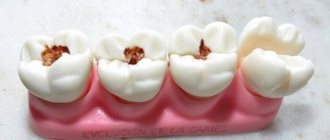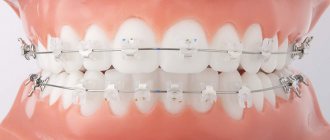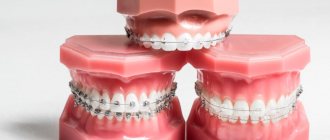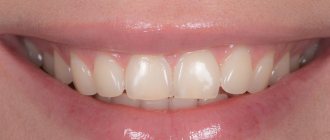The search for new high-quality materials for filling damaged teeth has been going on, perhaps, throughout the entire history of the development of dentistry. Dental clinics are gradually abandoning the crumbling and short-lived dental cements that were used to fill the teeth of our grandmothers and great-grandmothers - because they have been replaced by the latest photopolymer materials. Why a light polymerization filling is good, what kind of material it is - every person should know, because few people in life manage to avoid the filling procedure.
How is a light seal different from a regular one?
In fact, the term “light filling” is more popular among the people, but experts usually use other names: photopolymer, light-curing, heliopolymer are the most common of them. A light filling is a fairly plastic material, and thanks to ultraviolet light it is much easier for a specialist to carry out a filling. This is the main difference between a light filling and a regular one. In addition, you can choose many colors and shades for a light filling, which is why it is so often used in the treatment and restoration of teeth in the smile area. In short, the main advantages of a light filling are reliability, durability and high aesthetics. These qualities make light-based dental fillings one of the most sought after in the dental market.
Where to go if you are forced to pay
You can start solving the situation with the head doctor of the clinic. A more reliable way is the organization that issued the compulsory medical insurance policy, or the Ministry of Health directly. You can even call there from the dentist's office. If you paid for the service and then decided to contact these authorities for clarification, keep the receipt and receipt.
In some situations, refunds are not possible. This is due to the fact that the contract contained a clause against refusal of free installation of a photo seal, and the person, being inattentive, agreed to this. Study everything you sign thoroughly so that there are no questions later.
Composition of the light seal
The vast majority of filling types are based on the use of a mixture of several materials. A filling made from a light-curing composite has a rather complex composition, which is partly why it costs more than its analogues.
Light seal materials
- Heliocomposite.
The basis of a light filling, which under the influence of an ultraviolet lamp breaks down into radicals, due to which polymerization (hardening) of the filling material occurs. - Filler.
This can be silicon dioxide, glass ceramics, etc. The structure, color and area of application of the filling depend on the type of filler. - Connecting elements.
Services under the compulsory medical insurance policy: what is required and what is not
Let us consider in detail the list of services that can be obtained under compulsory medical insurance in dentistry in 2021:
- examination, consultation and diagnostics from doctors in various fields of dentistry: therapist, surgeon, orthopedist and orthodontist,
- treatment of caries, pulpitis and periodontitis, gingivitis and periodontitis, installation of fillings,
- treatment and healing of jaw fractures,
- removal of mineralized plaque mechanically,
- tooth extraction, treatment of alveolitis, cysts, abscesses and pericoronitis,
- radiography: only targeted two-dimensional images can be taken free of charge,
- physiotherapeutic procedures,
- enamel remineralization procedures, orthodontic bite correction with plates and production of temporary stamped crowns for children.
It must be emphasized that to carry out manipulations free of charge, doctors use exclusively domestically produced materials.
And here is a list of what is not covered under the compulsory medical insurance policy in dentistry:
- installation of light-curing fillings, pins,
- use of imported materials and glass ionomer cements,
- surgical methods of treating periodontal tissues (curettage, tissue regeneration, osteoplastic surgery, vestibuloplasty),
- tooth-preserving operations (cystectomy, root apex resection),
- prosthetics, dental implantation,
- orthodontic bite correction using braces, mouth guards and other devices,
- imported anesthesia, sedation and anesthesia,
- teeth cleaning using ultrasound and Air-Flow, fluoridation,
- whitening,
- computed tomography and other types of 3D studies.
Important! Some services, for example, preferential prosthetics, are available only to certain categories of citizens. But again, it is important to understand that to receive them you need to collect the necessary papers, stand in line at the relevant social services and wait. In addition, only prostheses made from inexpensive materials - metal, acrylic, nylon - can be supplied free of charge. Who is eligible for the service and how to get it? More details about this in the feature article on the website.
Types of light seals
Some sources indicate that only anterior teeth can be restored using light-curing composite fillings, but this is incorrect information. Today, such filling is successfully used in all departments, except for the most inaccessible places (for example, “wisdom teeth”). All types of light fillings differ in the composition of the filler, which determines their characteristics.
| Light fillings for teeth | Description | Application area |
| Macro-filled light fillings (light fillings for chewing teeth) | The filler consists of solid large particles (macrophiles). They give the filling strength, but have a rough surface and tend to lose color. | Macrophilic light fillings are usually used on posterior teeth or on the inside of the dentition, where aesthetics are less important. |
| Microfilled light fillings (light fillings for front teeth) | Fillers consisting of small particles. They hold color well, can be polished, but are very fragile. | Mostly used in the smile area. |
| Nanohybrid | They consist of ultra-fine particles that are both durable and aesthetic. | Universal light fillings that can be used in all types of restorations. |
The advantage of filling over silver plating
Silvering of teeth is the smearing of teeth with silver nitrate, which has an antiseptic effect. Its disinfecting properties should stop the spread of caries.
However, silvering is only a method of preserving destruction, permissible only in the very early stages, and not a treatment. In some cases, silvering does not help, and the carious process moves on imperceptibly underneath it.
Giving a child a filling is the most effective way to solve the problem of caries.
You can make an appointment at the Shifa pediatric dentistry by calling the contact number or using a special form. We try to provide our clients with the most favorable cost of treatment - check out the price list on the “Prices” page.
Installation of a light seal
Today, a light filling can be installed in almost any clinic. Installation has approximately the same number of steps as in the case of other types of fillings (with the exception of scanning with an ultraviolet lamp).
- Initial consultation, panoramic x-ray.
- Anesthesia.
- Preparation of damaged tooth tissues. During depulpation, the canals are treated and a temporary filling is installed.
- Placing a light filling (filling the area with filling material and giving it a primary shape).
- Polymerization of the filling under the influence of ultraviolet light.
- Grinding and finishing of the filling to achieve optimal shape and correct occlusal contact.
If after filling with a light filling your tooth hurts for more than three days or you feel discomfort when closing your jaws, contact your doctor as soon as possible. Find a trusted clinic where you can get a filling in Moscow on Startsmile.ru in the “Search for dentists” section
Dental treatment according to VHI
Money
Voluntary health insurance (VHI) is a policy that gives the owner the right to receive medical services in private clinics, provided that the person has chosen the desired tariff from the insurance company and paid for it in advance. Of course, the most common way to get such a policy is as an additional bonus from your employer. In this case, the employer pays your contributions to both the compulsory medical insurance fund and the insurance company for VHI, and it already covers the costs of private clinics for your treatment. Each insurance company works with its own list of medical institutions, so you need to immediately clarify it by purchasing a policy yourself or receiving it at work. A voluntary health insurance policy can be basic or extended. For example, not all VHI policies include dental services, but they can be purchased in addition. The range of tariffs here is very large and depends on the insurance company. When a person with VHI has a toothache, he does not immediately go to the clinic. The first thing he does is call the insurance company and describe the symptoms to the doctor on duty. Based on the complaints, the dispatcher draws up an approximate picture of the disease and chooses which specialist to refer the patient to. If there are no special restrictions, the dispatcher takes into account your wishes - closer to home, closer to work, and so on. In order to receive further treatment under insurance after the initial appointment, you need to be given the correct diagnosis, and the doctor and the clinic have a financial interest in further caring for the patient. However, there is a nuance with VHI - sometimes the doctor is interested in selling services under VHI, and sometimes - private services of the clinic. The fact is that there are several types of insurance. The first type, attachment, involves a one-time visit, often with acute pain. They will not leave you to suffer, they will help you, but if the problem requires long-term treatment, insurance will not cover it. The second type of insurance is factual. In this type of insurance, treatment is agreed upon in advance with the clinic and the insurance company.
Naturally, it is more interesting to accept such patients, from whom we receive money every time
The attachment amounts, based on the VHI tariff, vary. On average, the clinic will receive from 800 rubles to 5 thousand rubles for a one-time patient.
Let’s say, according to the clinic’s price list, treating caries on average costs around 5 thousand rubles. And a patient, for example, has a thousand allocated for treatment under VHI. What interest do I have in treating his caries? Accordingly, I can lie to the patient, say, “You don’t just have caries here, you have caries with a large degree of tooth destruction and this is not an insured event, but you can treat it for a fee, I can even give you a discount since you came under the insurance program.” to still retain the patient
When coming for dental treatment under VHI, the patient cannot know for sure whether he will be treated completely free of charge, whether insurance will partially cover the treatment, or whether the doctor will try to impose additional services. It's always a gamble. And the insurance company can't verify who is right—they have to trust the doctor who examines you. Because the doctor is close to you, but the insurance manager is far away.
Quality
The patient may feel that VHI provides better quality treatment than compulsory medical insurance, since the employer or you personally contributed additional money to obtain insurance for yourself. It's a convenient idea, but it's often not true.
The VHI system does not bring much money to doctors, but it does bring money to clinic owners. Clinic owners do not want to invest in treatment under VHI and often purchase the cheapest materials for treatment through insurance.
According to Maria, it often turns out that in the same clinic, fillings that are provided for paid treatment are of better quality than fillings for those treated under VHI. It all depends on the greed of the particular owner of the clinic.
At one of my places of work, we had the same material for filling canals both for compulsory medical insurance and for payers. No expense was spared on materials. And at the same time, that material was of higher quality than when I worked in another private clinic and was treated under VHI and for a fee.
Some services, like taking pictures or brushing your teeth, can be safely done under VHI, because few consumables are needed, and it’s difficult for a specialist to save money on you and ruin something. In other cases, for quality treatment you need to be willing to pay extra.
If you want to receive high-quality treatment under the VHI system, you should prepare for financial investments, since insurance will not be able to cover the entire cost of the doctors’ work and materials. Moreover, it is better to immediately indicate your position to the doctor: say that you are interested in the best result and are ready to pay extra for this. This will make things easier for everyone.
How much does it cost to install a light seal?
In order to most accurately tell you how much it costs to get a light filling, you need to understand what type of filling will be installed, as well as where exactly the treatment will take place. The cost of a light filling in a state clinic starts from 900 rubles. As a rule, this is a medium quality composite material intended for the restoration of chewing teeth. In private dental clinics in Moscow, the price of a light filling starts from 1,500 – 2,000 rubles. Light fillings for front teeth are more expensive: for aesthetic restorations, the price can exceed 3,000 rubles.
Reviews
Taking your child to the dentist’s office is an important undertaking, because in childhood a lifelong attitude towards one’s own health is formed. Therefore, we make every effort to ensure that young patients and their parents have only positive emotions after dental treatment. You can judge this by reading the reviews about the Natadent clinic left by our clients.
We will be grateful if you also leave a review describing your impressions of the visit. This will be an excellent hint for us about which aspects of our work are especially important for young patients and their parents. We strive to be the best and are happy to improve with your help!











